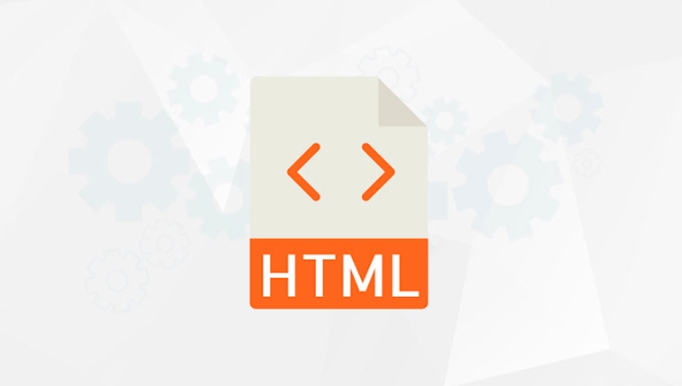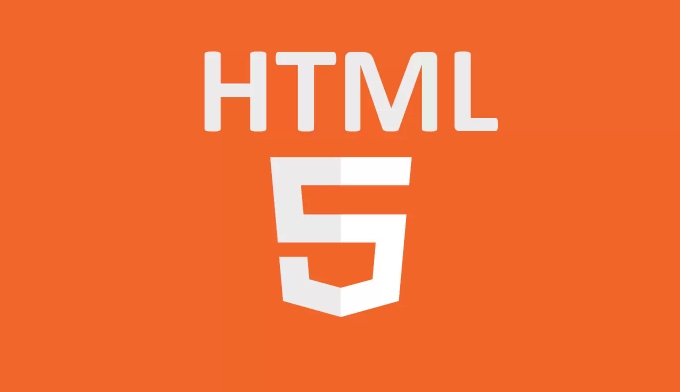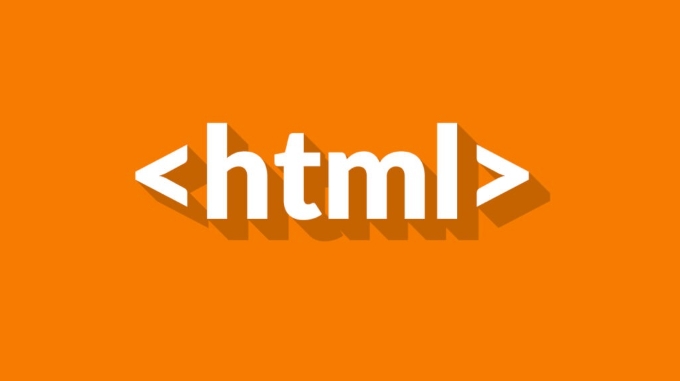When HTML built-in verification is not enough, a custom validator can implement more complex form validation through JavaScript. First, listen to the form's submit event and prevent the default submission behavior from being executed to execute custom logic; second, error message elements can be inserted and styled when verification fails to improve the user experience; finally, custom verification can be incorporated into the browser's native verification process using Constraint Validation APIs such as setCustomValidity() and checkValidity() to achieve more granular control.

When you need more control over form validation than what HTML's built-in rules offer, custom validators are the way to go. Whether it's checking a complex password pattern or verifying that two fields match, writing your own validation logic gives you the flexibility to handle just about any case.

Understanding When You Need Custom Validation
HTML has some great built-in validation features — things like required , minlength , and pattern work well for most basic forms. But when you start dealing with more complex requirements, those tools might not be enough.
For example:

- Making sure a password contains both uppercase and lowercase letters
- Checking that a confirmation field matches another (like confirming an email)
- Validating a phone number format that varies by country
These are cases where a simple regex or required check won't cut it. That's when rolling your own validator becomes useful.
How to Create a Basic Custom Validator with JavaScript
To implement custom validation, you can use JavaScript to hook into the form submission process and run your own checks. The key is to listen for the submit event on the form and prevent the default action if validation fails.

Here's a basic approach:
document.querySelector('form').addEventListener('submit', function(event) {
const password = document.getElementById('password').value;
const confirmPassword = document.getElementById('confirm-password').value;
if (password !== confirmPassword) {
alert('Passwords do not match.');
event.preventDefault(); // Stops form from submitting
}
});This kind of setup lets you add as many checks as you want. Just make sure to give users clear feedback — whether through alerts, error messages next to the field, or highlighting the input in red.
Showing Friendly Error Messages
Built-in validation usually shows browser-generated popups, which can look out of place or feel too technical. With custom validation, you have full control over how errors are presented.
A good way to show errors:
- Insert a
<div>or<span>near the input field to display the message - Style it so it stands out but doesn't overwhelm
- Clear the message once the input is corrected
Example structure:
<div class="input-group"> <label for="email">Email:</label> <input type="email" id="email" required /> <div class="error-message"></div> </div>
Then in JavaScript:
const emailInput = document.getElementById('email');
const errorMessage = document.querySelector('.error-message');
if (!isValidEmail(emailInput.value)) {
errorMessage.textContent = 'Please enter a valid email address.';
event.preventDefault();
} else {
errorMessage.textContent = '';
}This keeps the user experience smooth and consistent with your site's design.
Using Constraint Validation API for More Control
If you want to integrate with the native validation system rather than bypass it entirely, you can use the Constraint Validation API . This allows you to add custom validity messages without completely overriding the browser's validation flow.
Key methods:
-
setCustomValidity()– sets a custom error message -
checkValidity()– manually checks if the element is valid
Useful when you want to tie custom logic into the same flow as standard validation.
For instance:
const passwordInput = document.getElementById('password');
passwordInput.addEventListener('input', function() {
if (passwordInput.value.length > 0 && passwordInput.value.length < 8) {
passwordInput.setCustomValidity('Password must be at least 8 characters long.');
} else {
passwordInput.setCustomValidity('');
}
});This way, the browser will treat your condition just like any other validation rule.
Basically that's it. Custom validators aren't hard to set up once you get the hang of them, but they do require attention to detail—especially around user feedback and integration with existing validation systems.
The above is the detailed content of Implementing Custom Validators for HTML Forms. For more information, please follow other related articles on the PHP Chinese website!

Hot AI Tools

Undress AI Tool
Undress images for free

Undresser.AI Undress
AI-powered app for creating realistic nude photos

AI Clothes Remover
Online AI tool for removing clothes from photos.

Clothoff.io
AI clothes remover

Video Face Swap
Swap faces in any video effortlessly with our completely free AI face swap tool!

Hot Article

Hot Tools

Notepad++7.3.1
Easy-to-use and free code editor

SublimeText3 Chinese version
Chinese version, very easy to use

Zend Studio 13.0.1
Powerful PHP integrated development environment

Dreamweaver CS6
Visual web development tools

SublimeText3 Mac version
God-level code editing software (SublimeText3)
 Applying Semantic Structure with article, section, and aside in HTML
Jul 05, 2025 am 02:03 AM
Applying Semantic Structure with article, section, and aside in HTML
Jul 05, 2025 am 02:03 AM
The rational use of semantic tags in HTML can improve page structure clarity, accessibility and SEO effects. 1. Used for independent content blocks, such as blog posts or comments, it must be self-contained; 2. Used for classification related content, usually including titles, and is suitable for different modules of the page; 3. Used for auxiliary information related to the main content but not core, such as sidebar recommendations or author profiles. In actual development, labels should be combined and other, avoid excessive nesting, keep the structure simple, and verify the rationality of the structure through developer tools.
 Implementing Clickable Buttons Using the HTML button Element
Jul 07, 2025 am 02:31 AM
Implementing Clickable Buttons Using the HTML button Element
Jul 07, 2025 am 02:31 AM
To use HTML button elements to achieve clickable buttons, you must first master its basic usage and common precautions. 1. Create buttons with tags and define behaviors through type attributes (such as button, submit, reset), which is submitted by default; 2. Add interactive functions through JavaScript, which can be written inline or bind event listeners through ID to improve maintenance; 3. Use CSS to customize styles, including background color, border, rounded corners and hover/active status effects to enhance user experience; 4. Pay attention to common problems: make sure that the disabled attribute is not enabled, JS events are correctly bound, layout occlusion, and use the help of developer tools to troubleshoot exceptions. Master this
 Configuring Document Metadata Within the HTML head Element
Jul 09, 2025 am 02:30 AM
Configuring Document Metadata Within the HTML head Element
Jul 09, 2025 am 02:30 AM
Metadata in HTMLhead is crucial for SEO, social sharing, and browser behavior. 1. Set the page title and description, use and keep it concise and unique; 2. Add OpenGraph and Twitter card information to optimize social sharing effects, pay attention to the image size and use debugging tools to test; 3. Define the character set and viewport settings to ensure multi-language support is adapted to the mobile terminal; 4. Optional tags such as author copyright, robots control and canonical prevent duplicate content should also be configured reasonably.
 Best HTML tutorial for beginners in 2025
Jul 08, 2025 am 12:25 AM
Best HTML tutorial for beginners in 2025
Jul 08, 2025 am 12:25 AM
TolearnHTMLin2025,chooseatutorialthatbalanceshands-onpracticewithmodernstandardsandintegratesCSSandJavaScriptbasics.1.Prioritizehands-onlearningwithstep-by-stepprojectslikebuildingapersonalprofileorbloglayout.2.EnsureitcoversmodernHTMLelementssuchas,
 How to associate captions with images or media using the html figure and figcaption elements?
Jul 07, 2025 am 02:30 AM
How to associate captions with images or media using the html figure and figcaption elements?
Jul 07, 2025 am 02:30 AM
Using HTML sums allows for intuitive and semantic clarity to add caption text to images or media. 1. Used to wrap independent media content, such as pictures, videos or code blocks; 2. It is placed as its explanatory text, and can be located above or below the media; 3. They not only improve the clarity of the page structure, but also enhance accessibility and SEO effect; 4. When using it, you should pay attention to avoid abuse, and apply to content that needs to be emphasized and accompanied by description, rather than ordinary decorative pictures; 5. The alt attribute that cannot be ignored, which is different from figcaption; 6. The figcaption is flexible and can be placed at the top or bottom of the figure as needed. Using these two tags correctly helps to build semantic and easy to understand web content.
 HTML for email templates tutorial
Jul 10, 2025 pm 02:01 PM
HTML for email templates tutorial
Jul 10, 2025 pm 02:01 PM
How to make HTML mail templates with good compatibility? First, you need to build a structure with tables to avoid using div flex or grid layout; secondly, all styles must be inlined and cannot rely on external CSS; then the picture should be added with alt description and use a public URL, and the buttons should be simulated with a table or td with background color; finally, you must test and adjust the details on multiple clients.
 What are the most commonly used global attributes in html?
Jul 10, 2025 am 10:58 AM
What are the most commonly used global attributes in html?
Jul 10, 2025 am 10:58 AM
class, id, style, data-, and title are the most commonly used global attributes in HTML. class is used to specify one or more class names to facilitate style setting and JavaScript operations; id provides unique identifiers for elements, suitable for anchor jumps and JavaScript control; style allows for inline styles to be added, suitable for temporary debugging but not recommended for large-scale use; data-properties are used to store custom data, which is convenient for front-end and back-end interaction; title is used to add mouseover prompts, but its style and behavior are limited by the browser. Reasonable selection of these attributes can improve development efficiency and user experience.
 How to handle forms submission in HTML without a server?
Jul 09, 2025 am 01:14 AM
How to handle forms submission in HTML without a server?
Jul 09, 2025 am 01:14 AM
When there is no backend server, HTML form submission can still be processed through front-end technology or third-party services. Specific methods include: 1. Use JavaScript to intercept form submissions to achieve input verification and user feedback, but the data will not be persisted; 2. Use third-party serverless form services such as Formspree to collect data and provide email notification and redirection functions; 3. Use localStorage to store temporary client data, which is suitable for saving user preferences or managing single-page application status, but is not suitable for long-term storage of sensitive information.






